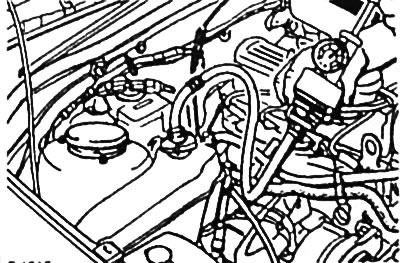Remove the cover of the expansion tank, check the cover and the neck of the tank for rust and salt deposits, remove any deposits.
Caution: Remove the cap only when the radiator has cooled down and feels warm to the touch, otherwise there is a risk of burns from hot fluid. For safety reasons, cover the neck of the tank with a thick rag.

Instead of a cap, screw the connecting element of the device onto the filler neck of the expansion tank.
Using the hand pump of the device, create an overpressure of approximately 1.4 bar in the cooling system.
The pressure created must remain constant for about two minutes. If the pressure drops, check the cooling system visually for leaks and eliminate the cause of the leak. The location of the leak is determined by the protrusion of the pressurized coolant.
Release the pressure in the cooling system and slowly unscrew the connecting element of the device.
Checking the safety valve
The safety valve is located in the radiator cap. At a certain excess pressure, the valve opens the cooling system and allows excess coolant to flow into the expansion tank.

To check the radiator cap through the adapter, as shown in the figure, screw onto the device.
Pressurize with a hand pump and read the valve opening. The measured value must match the pressure value stamped on the radiator cap. If the pressures do not match, replace the radiator cap.
Check the coolant level, top up if necessary to the MAX mark.
Screw on the cap of the expansion tank. If damaged, replace the cover rubber seal.
Visitor comments